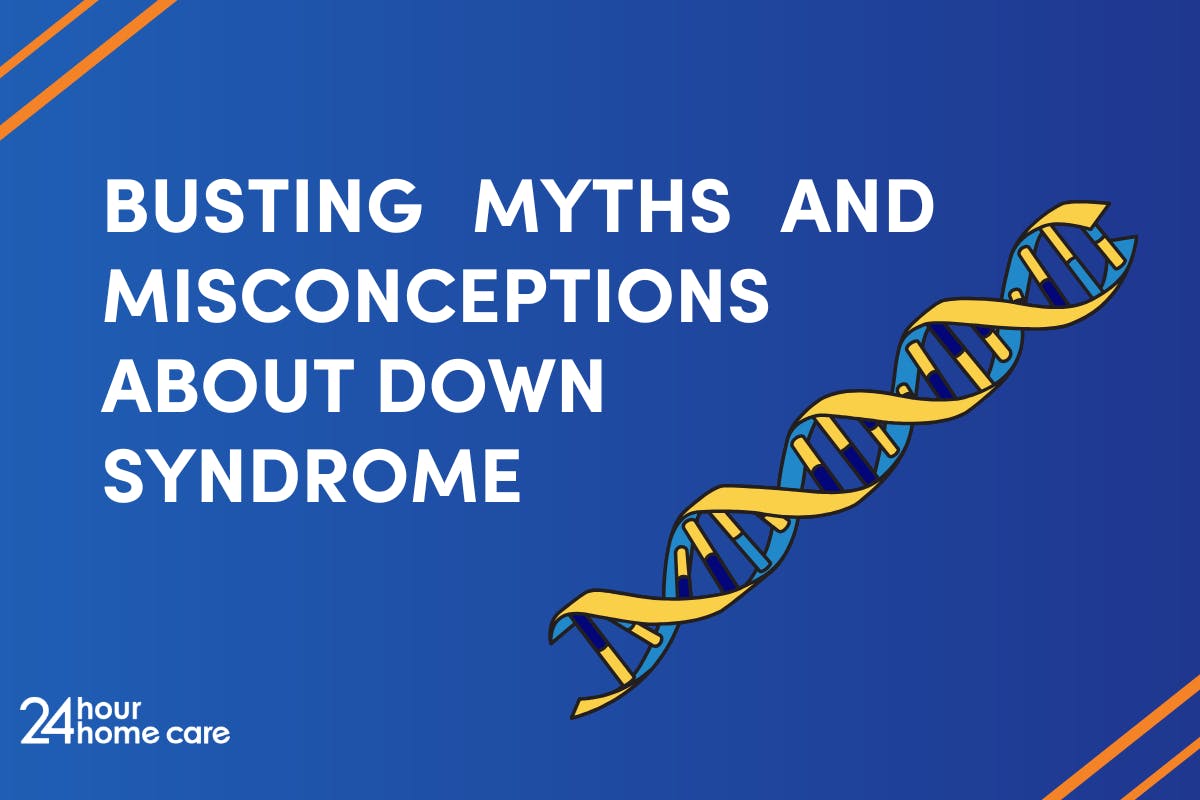Busting Myths and Misconceptions about Down Syndrome
While we are learning more and more about Down syndrome, there are still a lot of misconceptions floating around. Learn the truths behind the biggest myths about Down syndrome.

Down syndrome is a genetic condition that occurs when a child is born with an extra copy of chromosome 21. Chromosomes are found in the structure of every cell; they contain strands of DNA and regulate how a person’s body looks and functions.
When babies are born with an extra chromosome 21, they are born with characteristics of Down syndrome. Though the term Down syndrome was coined in 1866, the genetic condition has likely been around for thousands of years.
While we are learning more and more about Down syndrome, there are still a lot of misconceptions floating around.
Myth: It’s rare for a baby to be born with Down syndrome.
Fact: Down syndrome is the most commonly occurring genetic condition. Nearly 1 in every 700 babies are born with the genetic mutation that causes Down syndrome, according to the CDC.
Myth: There is only one type of Down syndrome.
Fact: There are three types of Down syndrome. They are:
- Trisomy 21 – Trisomy 21, or nondisjunction, is the most common type of Down syndrome, it accounts for 95% of cases. It happens when an embryo has three copies of chromosome 21 instead of the usual two.
- Mosaicism – This type of Down syndrome happens when there is a mixture of different cells. Most cells contain 46 chromosomes, with this condition, some cells can have 47. The extra chromosome is the cause for Down syndrome. Mosaicism counts for 2% of Down syndrome cases.
- Translocation – With Translocation Down syndrome, an embryo has 46 chromosomes; however, a partial copy of chromosome 21 has attached itself to another chromosome. Translocation counts for 3% of Down syndrome cases.
Myth: Down syndrome is hereditary.
Truth: Most cases of Down syndrome are not hereditary. Down syndrome is not caused by any genetics, it is caused by the extra chromosome we spoke about above. Translocation is the only type of Down syndrome that can be passed down; however, only 3% of individuals with Down syndrome have the Translocation type.
Myth: Individuals with Down syndrome have serious developmental delays.
Truth: This is not true. Just like everything else, symptoms are on a spectrum. What is true for one individual will not be true for the other and vice versa. While it is true that most individuals with Down syndrome have some levels of cognitive and physical delays, that doesn’t mean they have serious issues. Oftentimes, early intervention is the key to helping individuals with Down syndrome excel in the classroom, workplace, and life in general.
Myth: All individuals with Down syndrome are the same.
Truth: This can’t be further from the truth. Individuals with Down syndrome may have some similar facial characteristics, they are unique people with their own personalities and rich personal lives. Down syndrome does not stop an individual from going to school, working a full-time job, being a community leader, getting married, or starting a family.
We hope you learned something about Down syndrome after reading through these facts. To learn more about Down syndrome check out the National Down Syndrome Society, National Down Syndrome Congress, or the Global Down Syndrome Foundation.
